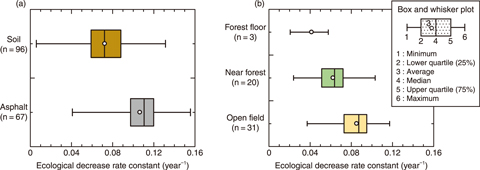
Fig.1-22 Distribution of the estimated ecological decrease rate constant
The decreasing trend of the ambient dose rate one meter above the ground (i.e., the air dose rate) after decontamination work and the factors affecting this decrease are expected to offer essential information that can be used to estimate and reduce any further public external exposure. The decreasing trends in air dose rates have been qualitatively evaluated across an extensive area around TEPCO’s Fukushima Daiichi NPS (1F) using various monitoring methods after the 1F accident. The air dose rate decreased more quickly in residential areas than in paddy fields but more slowly than in forested areas. These results indicated that the land use type affects the change in the air dose rate. However, no quantitative assessment of the impact of human activities has yet been performed. A detailed dataset categorized by the characteristics (e.g. decontaminated, difficult-to-return, or restricted residence zones) is needed for such an assessment. This work therefore aimed to evaluate the effect of land use type on decontamination trends by analyzing the long-term decrease trend of the air dose rate in the decontaminated area in the evacuation zone around the 1F.
Six decontaminated fields in Kawamata Town, Namie Town, Kawauchi Village, Tomioka Town, Shimonogami and Ottozawa in Okuma Town were studied from November 2012 to November 2016. Air dose rates were measured periodically from each of the 163 locations at intervals of one to three months. As the factor of intercomparison, the ecological decrease rate constant was calculated by subtracting the physical decay rate of radioactive cesium (134Cs and 137Cs; RCs) during the survey period. The estimated ecological decrease rate constant ranged from 0.0058 to 0.16 (year−1), thus indicating that the air dose rate in all areas studied decreased faster than the physical half-lives of RCs.
To evaluate the effect of surface properties on the variation in the ecological decrease rate constant, the constants of the surface of the soil and the pavement were evaluated separately, as shown in Fig.1-22(a). The ecological decrease rate constant was significantly higher on the asphalt pavement than on the soil surface. This is consistent with the results of prior investigations following the 1F and Chernobyl Nuclear Power Plant accidents. These results suggest that the rapid decrease in air dose rate on the pavement probably resulted from the wash-off of RCs from the surface, indicating that the decrease of air dose rate was higher in the case of pavement wash-off than it was for the vertical penetration of RCs into the soil.
The distribution of the ecological decrease rate constant for the forest floor, areas near the forest, and open fields are shown in Fig.1-22(b). The ecological decrease rate constant increased with the distance from the forest, which included mixed broad-leaved forests and evergreen conifers. Immediately after the 1F accident, RCs were deposited on the canopy. The deposited RCs then gradually moved to the forest floor. Due to the additional source term, the ecological decrease rate constant in the forest is relatively slow. On the other hand, the RCs on the open field penetrated vertically into the soil, the ecological decrease rate constant was relatively fast.
The results of this study will be useful for predicting the long-term future external exposure dose of residents who returned after decontamination.
(Shigeo Nakama)